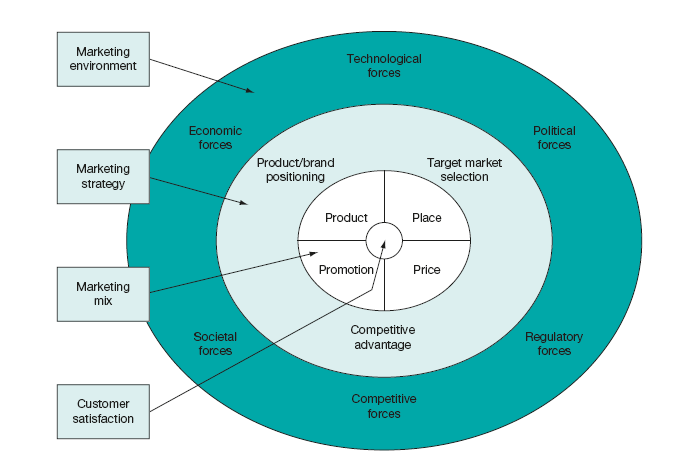4Ps of marketing (Kotler)
![]()
![]()
Philip Kotler introduced what is commonly known as the 4Ps of marketing: product, price, place and promotion. The ‘4Ps’, or the marketing mix, is a description of the strategic position of a product in the marketplace. The premise of the model is that marketing decisions generally fall into the following four controllable categories:
When grouped into these four categories, marketing decisions can be justified and chosen deliberately, taking into account the intended effects (Figure 35.1).
Marketing (and sales) is the functional field in any organisation that bridges the customers’ perspective with the organisational perspective. An analysis of the elements that form the marketing mix of an organisation, the 4Ps introduced by Philip Kotler, gives insights into the company’s current and potential interactions with current and potential customers and the position the company has in the perception of its customers. The marketing mix is a tactical toolkit that an organisation can use as an integral part of its marketing strategy to realise its corporate strategy. As an organisation can adjust the 4Ps categories on a regular basis, it is able to keep pace with the changing needs of customers in a specific market segment.

Figure 35.1 The marketing mix: Kotler’s 4Ps
Source: after Kotler and Keller (2006)
There are three basic steps:
3 Step 3: Check. Monitoring and control on an ongoing basis are essential to ascertain the effectiveness of the chosen mix and how well it is being executed.
Over the years, the 4Ps have become an institution. But one of the main problems with the 4Ps is that they have a tendency to keep increasing in number, prompting the question ‘Where does marketing stop?’ Of all the candidates, the ‘people’ factor is undoubtedly the most widely accepted ‘fifth P’. After all, people manipulate the marketing mix as marketers; they make products/services available to marketplace as intermediaries; they create the need for marketing as consumers/buyers; they play an important role when it comes to service levels, recruitment, training, retention, and so on.
It is tempting to view the marketing mix variables as controllable, but remember that there are limits: price changes may be restricted by economic conditions or government regulations; changes in design and promotion are expensive and cannot be effected overnight; and people are expensive to hire and train. Do not forget to keep an eye on what is happening in the outside world, as some events may have a greater impact than you think.
Ultimately, successful marketing is a matter of gut feeling and acting on hunches. Whilst the marketing mix is a useful instrument when it comes to analysing and ordering, the multitude of marketing decisions has to be considered.
Kotler, P. and Armstrong, G. (2011) Marketing management, 14th edn. Upper Saddle River, NJ: Prentice-Hall.
Kotler, P. and Keller, K.L. (2000) A Framework for Marketing Management, 3rd edition. Upper Saddle River, NJ: Prentice-Hall.
Kotler, P. and Keller, K.L. (2006) Marketing Management: Analysis, Planning, Implementation and Control, 12th edn. Upper Saddle River, NJ: Pearson Education.